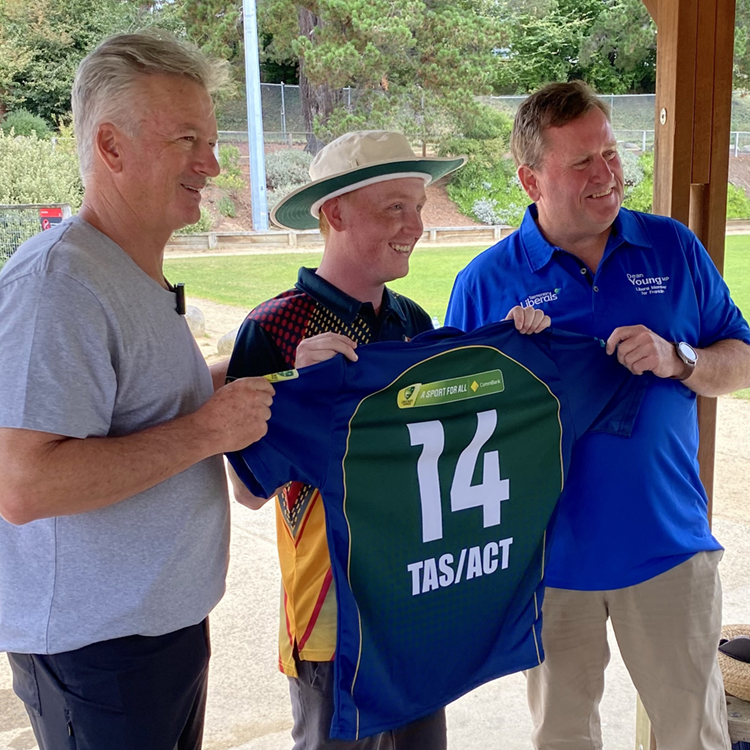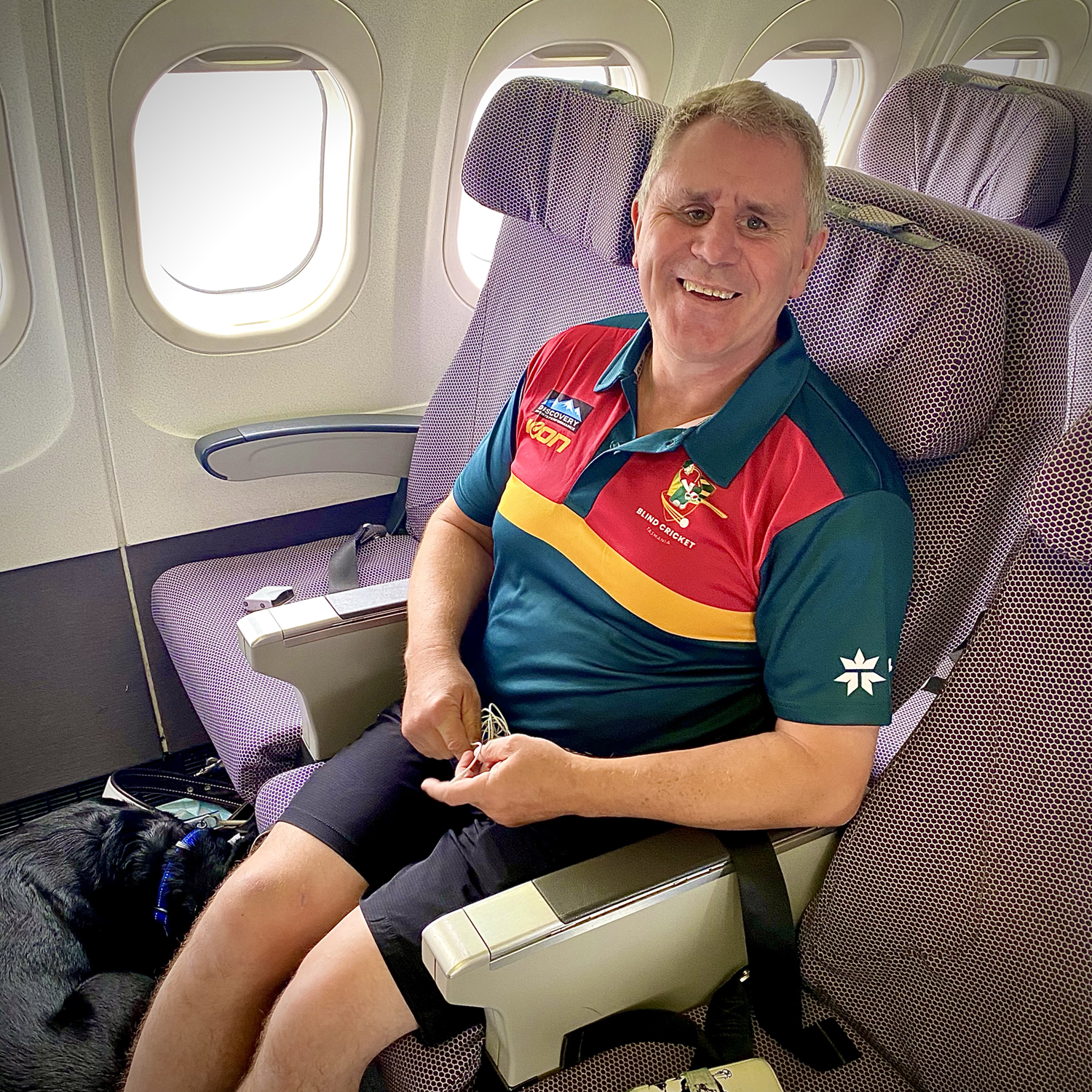Never miss an update or event
Register for updates to get news and event notifications sent to your inbox. To learn how we store and use your data, go to our privacy policy.



There are certain eligibility criteria and rule changes to the way the game is played, but it’s very similar to the ‘standard’ game we all know and love.

Blind cricket is a guide dog friendly sport. We also encourage support workers to come along to our game days and matches, and can provide transport for players, support workers, and guide dogs to some events. We welcome all abilities, ages, and genders.
Blind cricket follows the same classification as other competitive sports for athletes who are blind or have low vision.
To be eligible to play at national competition level, you have to fit into 1 of 3 classes (B1, B2, B3). All classes are based on your best eye with best correction, as determined using the World Blind Cricket Assessment Form.
These classes have been created by The International Blind Sports Association and International Paralympic Committee.


From no light perception in either eye to light perception, but an inability to recognise the shape of a hand at any distance or in any direction. Visual acuity is poorer than LogMAR 2.60 with best corrected vision.
Ability to recognise objects up to a distance of 2 metres. Visual acuity ranges from LogMAR 1.5 – 2.60 (below 2/60) with best corrected vision and/or viual field of less than ten (10) degrees diameter.
Can recognise contours between 2 and 6 metres away. Visual acuity ranges from LogMAR 1.40 – 1.0 (2/60 – 6/60) with best corrected vision and/or visual field of more than ten (10) degrees and less than forty (40) degrees diameter.

Blind cricket works in much the same way as the ‘standard’ cricket we all know and love. But with a few essential changes.



For state and national competition games there are 11 players on any team. Of those 11, 4 players will be totally blind (B1), 3 players will be partially blind (B2), and 4 players will be partially sighted (B3). For local game day sessions there are no barriers to participation and players with any level of visual impairment are welcome to get involved.
All players use standard cricket gear, including bats, helmets, pads and gloves, including regular pads and gloves for the wicket keeper. It’s the ball that’s different, with a bell inside that creates an audio cue for players to help locate it to hit and field the ball.
Blind cricket is played on a range of pitches right around the world, and can be played indoors or outdoors. The pitch is the same length and width as any other cricket pitch, and can be turf, concrete or have a synthetic covering. The boundary is measured 40 metres in a circle around the pitch and is marked by a white line and orange markers.
Most of the standard rules of cricket apply, with some additions. When the bowler sets to release the ball, they call ‘ready’ to alert the batter and fielders, then ‘play!’ as they release the ball. The ball is bowled underarm at any speed, but must bounce at least twice to be a legal delivery. It’s made of white plastic and filled with a bell so that it makes a ‘rattle’ sound as it moves around the field. Batters can choose to either bat off one knee or standing up. And a B1 player scores two runs (double) for every one run they achieve.
The umpire will call out their decisions when run out, caught or bowled, as well as using the hand signals that are used across all forms of cricket. Some rules have been modified to provide an equal playing environment. For example, a totally blind batter can’t be out through being stumped. Instead, they’re out after two LBW’s (leg before wicket).

Blind Cricket Tasmania opens the door to participation and representative pathways for players.
Blind cricket is great for people looking to have fun and enjoy the social, community and fitness of the sport. But, there are also opportunities for athletes who are blind or have low vision to play representative cricket, at a national and international level.

Ray Moxly
BCA Chair and Australian Representative Player

Dylan Gangell
State 'Tigers' representative player

Phil Menzie
State 'Tigers' representative player
A game day is an opportunity for all people who are blind or have low vision, as well as their support workers, family and friends, to learn what blind cricket is all about. Come along, meet new people, learn new skills and have some fun!
Contact us for transport to some events, or ask questions about the day.
The next game day is
TBD


Location:
TBD
Watch a range of videos on the players, rules, skills, and the exciting spectacle that is the unique game of blind cricket.
Australian test spinner Nathan Lyon explains blind cricket
A day in the life of a blind cricketer
Australian Blind Cricket Team plays The Bulls sighted team
The opportunity and benefits of Blind Cricket
Register for updates to get news and event notifications sent to your inbox. To learn how we store and use your data, go to our privacy policy.